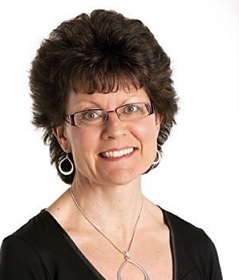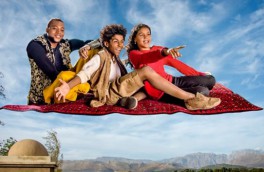What’s trending in kids content?
Drama, serialized content and Shakespeare? Over at the BBC's CBeebies, kids content is (sort of) growing up.
 It should come as a surprise to no one that the kids content space is evolving fast. But outside of Canada, where are those shifts taking place and what’s trending? In part one of this two-part story, which originally appeared in Playback magazine’s spring issue, we caught up with London, U.K.-based Kay Benbow (pictured), controller, CBeebies about what the channel has on the go at the moment, key trends in the children’s content space, and where the industry is heading.
It should come as a surprise to no one that the kids content space is evolving fast. But outside of Canada, where are those shifts taking place and what’s trending? In part one of this two-part story, which originally appeared in Playback magazine’s spring issue, we caught up with London, U.K.-based Kay Benbow (pictured), controller, CBeebies about what the channel has on the go at the moment, key trends in the children’s content space, and where the industry is heading.
What is CBeebies’ target audience?
Our offering is first and foremost for the under sixes, and broadly within that I’d say it’s two-to-four and four-to-six. Obviously there’s a huge developmental change that goes on [between those age groups]. We do know that children under two will start to watch things from an even younger age, but we focus on the two-to-four and four-to-six brackets.
Where is the audience watching CBeebies content, via broacast or online?
I think for the preschool audience right now, it’s probably equal. Obviously we know that kids are accessing our apps and that families are looking at SVOD – and we’re very aware of the challenge of Amazon and Netflix. But our [linear and digital] figures remain robust. We still reach, on average, 40% to 60% of the available audience on TV.
 How has CBeebies strategy evolved in recent years?
How has CBeebies strategy evolved in recent years?
Within the past two years I have started commissioning drama for the preschool audience, as well as content with a more serialized format. That started with Katie Morag, based on the book series by Mairi Hedderwick, and the preschool show Topsy and Tim (Darrall Macqueen), and has continued with Jamillah and Aladdin (Kindle Entertainment). Anyone that thinks children can’t follow a narrative are wrong – there are 60 episodes [in Topsy and Tim] and children tune in to see the continuation of the story.
Is the preschool space aging up?
Maybe. But perhaps we were underestimating them 10 years ago. We shouldn’t [underestimate preschoolers], which is why I have brought in drama and observational documentary and more factual shows. I’m not saying that any child can quote you Shakespeare verbatim, but they will at least know that story. For example, we did a part of Shakespeare’s A Midsummer Night’s Dream as part of the Shakespeare Celebration across the BBC last year and we kept a lot of the original language in there. Nothing is necessarily out of bounds now. I think if you’d asked me when I was given this job seven years ago, ‘Will you be doing Shakespeare?” I’d have thought you were probably a bit mad.
 What do you want (and not want) to hear in a pitch?
What do you want (and not want) to hear in a pitch?
What I want to hear is something that isn’t already on the channel. You’d be amazed by how many people don’t even watch the output. Do your homework, watch the channel, watch the digital content – I think CBeebies has three successful apps now (Playtime, Playtime Island and Story Time) and we are looking to do more digital content. I would welcome thought about how we can do things digitally, perhaps digitally first, and how we can use all the new platforms to connect with our audience.
Producers need to think about what their project will do for the audience – not how many toys it will sell or how many lunch boxes it will sell. It’s about having the audience at the heart of the idea. Making sure it’s engaging, age appropriate, and will speak to them at their level. And that doesn’t mean dumbing down, that means being very clever and creative about how you communicate ideas to our very young audience.
I don’t want overtly commercial shows that are just interested in selling merch or toys. Obviously I’m not naive – I know we have to have the commercial side to invest back into programming and production. But i’m not interested in someone coming to show me the range of merchandise and toys ahead of a good idea.
Are you seeing growth in the L&M space for kids properties in the U.K.?
I think the preschool space is very tough. You’ve got your evergreen brands that retailers want on the shelves and it’s hard for others to break through. I think it’s becoming more and more cut throat – if something isn’t working straight away, it gets pulled from the shelves.
An abbreviated version of this article originally appeared in the 2017 Spring issue of Playback.

 The definitive CDN broadcast and production resource.
The definitive CDN broadcast and production resource.










